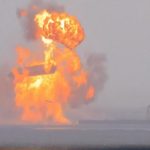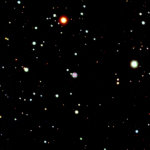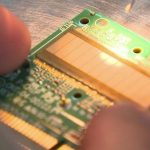The International Space Station (ISS) is being forced to swerve to avoid a collision with a fragment of a Chinese satellite, according to Russian space agency Roscosmos.
The space station, which is just over 100 metres wide, will have to climb 1.2km higher in altitude to avoid a close encounter with the Chinese “space junk” as translated in a Reuters report.
Roscosmos did not state how large the debris was, but explained that its mission control specialists “have calculated how to correct the orbit” of the ISS to protect it from a collision.
To boost itself higher, the ISS will use the engines of Russia’s expendable Progress cargo spacecraft that is currently docked to the station.
The ISS has two orbital segments, one principally controlled by Russia and one controlled by the US, although other states are permitted to contribute.
However, China is effectively banned from participating by an act of Congress restricting NASA‘s cooperation with Beijing.
The growing amount of orbital debris has regularly forced the space station’s controllers to carry out “avoidance manoeuvres” to prevent it from being hit.
Satellite images reveal China has built mock-up US Navy warships in remote desert
First Chinese spy extradited to US convicted of trying to steal aviation trade secrets
Britain tracked Chinese submarines and was ready to intercept jets in South China Sea, officers reveal
As of May, NASA tracks more than 27,000 pieces of space junk, although it says there is much more debris – which is too small to be tracked, but still large enough to threaten human spaceflight as well as robotic missions.
NASA said: “There are half a million pieces of debris the size of a marble or larger (up to 0.4 inches, or 1cm), and approximately 100 million pieces of debris about .04 inches (or 1mm) and larger.”
“There is even more, smaller micrometer-sized (0.000039 of an inch in diameter) debris,” it added, and all of them can pose a risk.
“Even tiny paint flecks can damage a spacecraft” when travelling at velocities of up to 17,500mph, said NASA – fast enough to go from London to New York in 12 minutes.
Although Roscosmos did not explain the origin of the debris, a Chinese anti-satellite test in 2007 to destroy an old weather satellite added more than 3,500 pieces of large, trackable debris and many more, smaller debris to the problem.






















